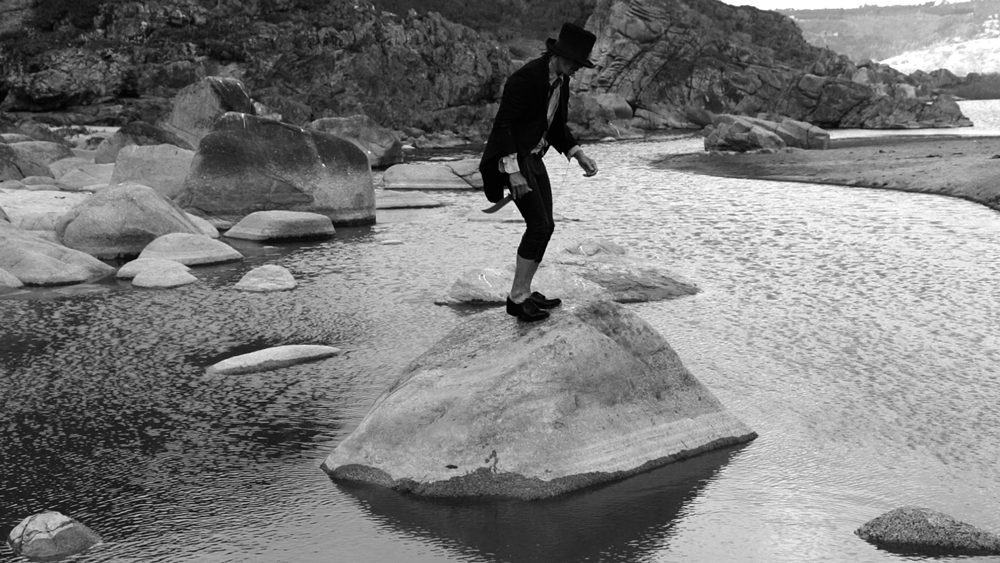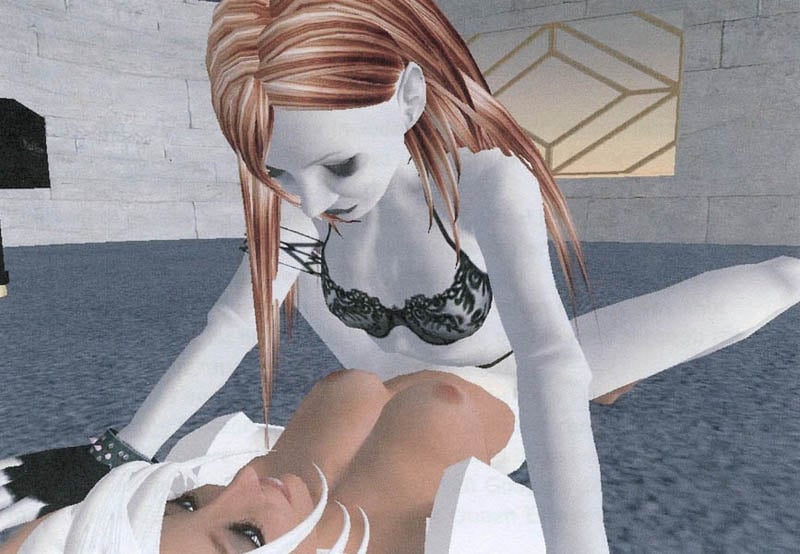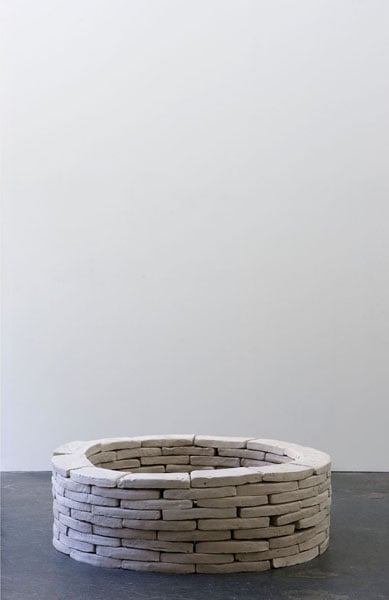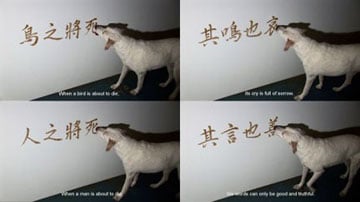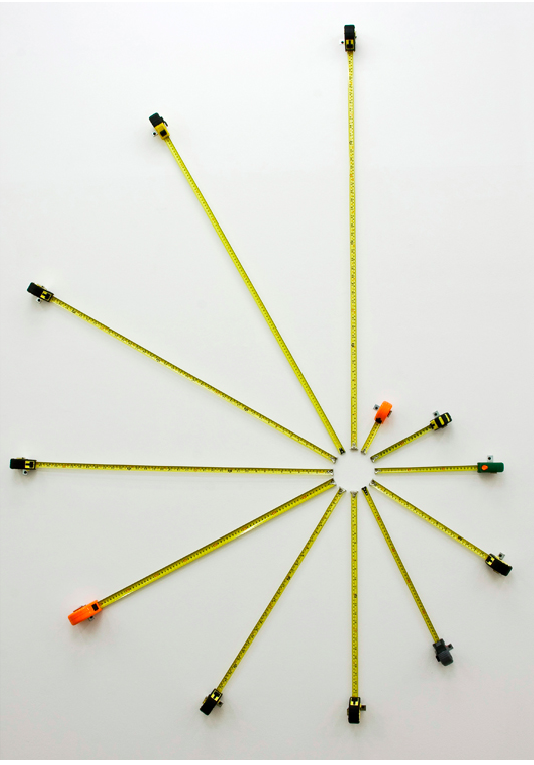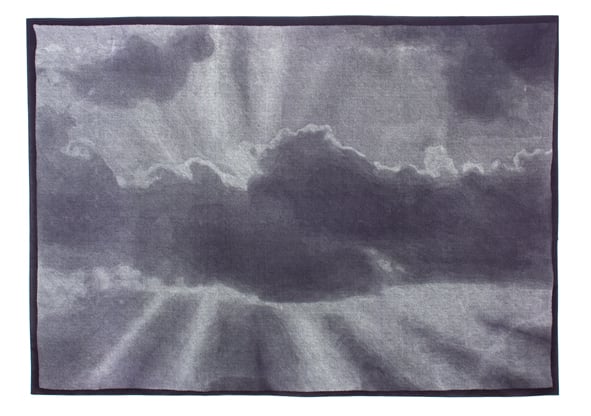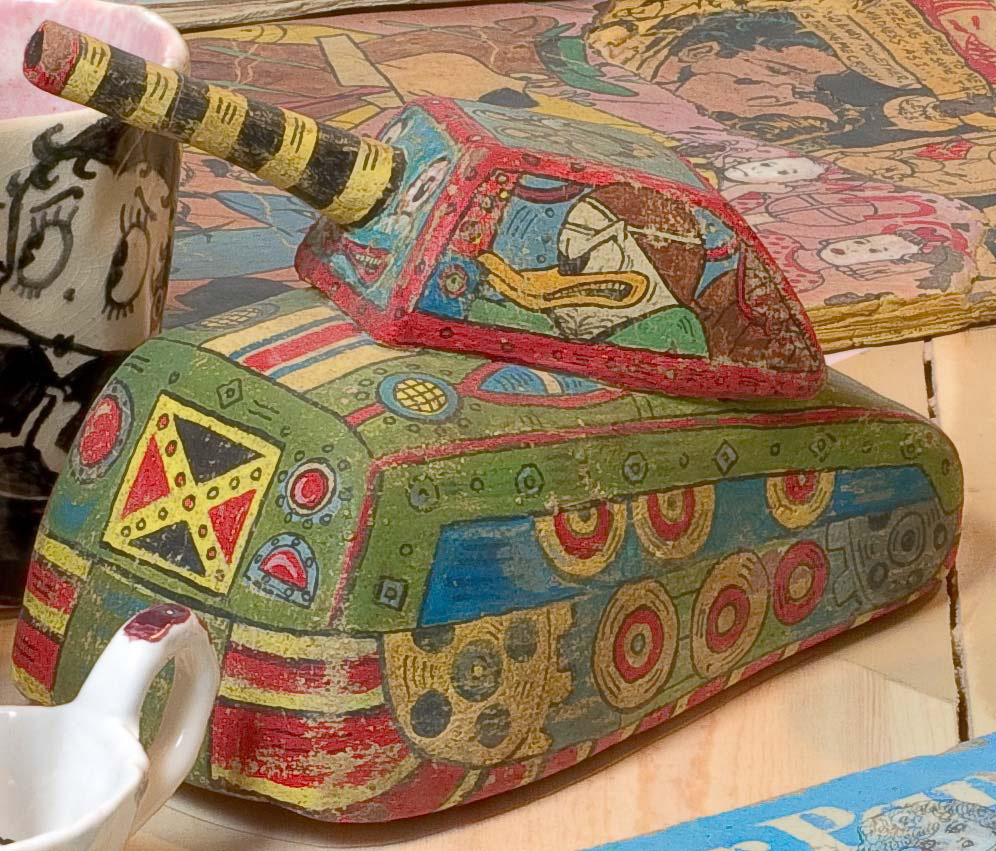
© » KADIST
Kristen Morgin
Donald of Doom Tank (2008) is a replica of a vintage metal toy with Donald Duck’s image one side and a soldier on the other. During World War II, the Walt Disney Company produced series of cartoon shorts that featured Donald Duck’s nightmare of working in an inhumane artillery factory in Nazi Germany and serving in the U. S. Army. By animating and normalizing war and military life, these cartoons not only achieved widespread popularity, but functioned as government propaganda.

© » KADIST
Kristen Morgin
Jeep Comics is based on the second of only two issues published by RB Leffingwell and Company in 1944–45. Though largely unknown, their protagonists, Jeep and Peep, embody the ethos of “Golden Age” comic books in which magically empowered heroes triumph over evils to boost patriotic enthusiasm.
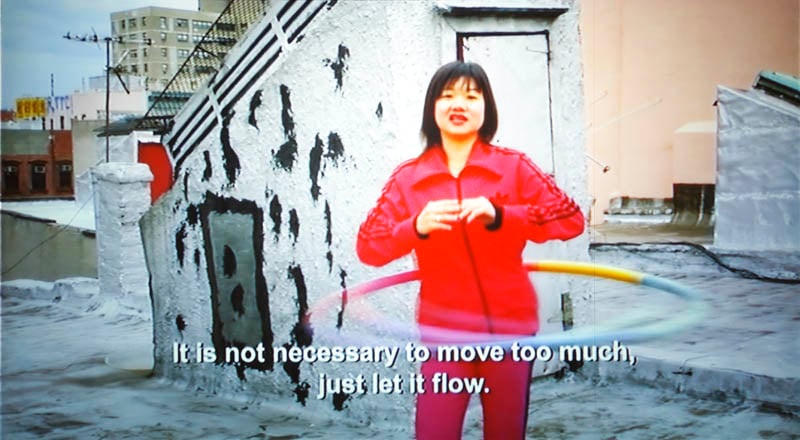
© » KADIST
Christian Jankowski
In New York City’s Chinatown, subject Suat Ling Chua’s morning exercise is to practice the hula hoop. When Christian Jankowski first saw this woman he immediately got the idea to shoot Rooftop Routine . In the short video, Chua leads the group and dictates the movements that each participant has to repeat.
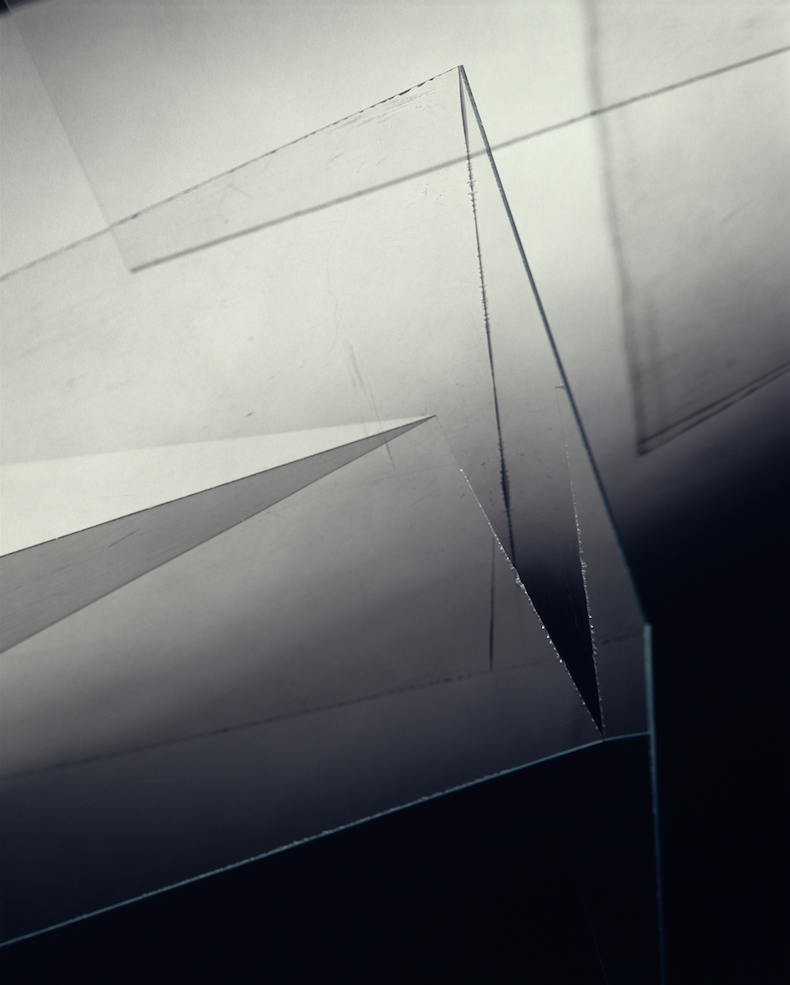
© » KADIST
Barbara Kasten
Barbara Kasten’s Studio Construct 51 depicts an abstract still life: a greyscale photograph of clear translucent panes assembled into geometric forms, the hard lines of their edges converging and bisecting at various points. Light streams from unseen sources and projects rectangular shadows against an adjacent wall. Three-dimensional shapes become suddenly flat as the objects in Kasten’s still life are juxtaposed alongside their ghostly traces.

© » KADIST
Gao Mingyan
In City Golf (2008) the artist Gao Mingyan films himself playing 18 “holes” of golf throughout the mega-city of Shanghai. For each hole, Gao traveled to significant places from his memory – his first school, his childhood playground, and his former date hangouts – and proceeded to play a makeshift round of golf at each location. In revisiting locales from his youth, Gao attempts to forge a linear connection between all the important places that comprise a life’s experience, his performative “passing” through each location poetically referencing his own passage through time.
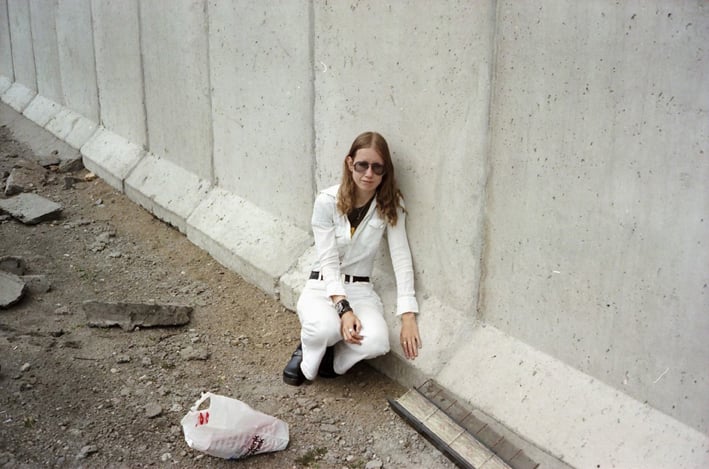
© » KADIST
Lars Laumann
Eija Riitta was born in 1954 in Liden, Sweden, and is “objectum-sexual.” Since June 17, 1979, her name is Eija Riitta Berliner Mauer taking the name of her husband, the Berlin Wall. In animism all elements of nature are considered as alive and have souls. “Objectum-sexuality” is an extension of this belief.
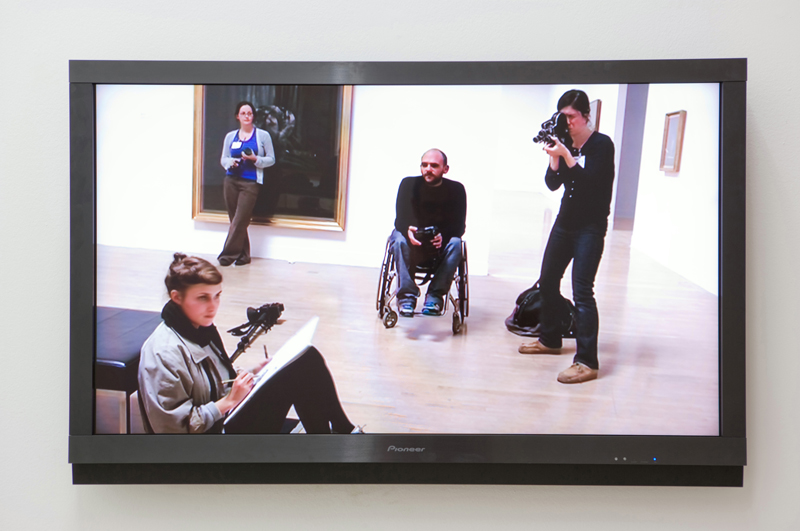
© » KADIST
Ryan Gander
The work consists of a work inside a work. The spectator is presented with a commissioned documentary on a flat-screen Tv on the subject of the production of the making of an artwork that doesn’t exist entitled The magic and the meaning (2008). The imaginary film, The magic and the meaning , is described only within the documentary, which follows parts of the making of the film, extracts from interviews with the writer and film maker Dan Fox and the artist and maker of the work Ryan Gander; as well as showing short slow-motion sections of the film that does not exist.

© » KADIST
Alessandro Balteo Yazbeck
Part of a larger series of photographic works, Alessandro Balteo Yazbeck’s Corrupted file from page 14 (V1) from the series La Vega, Plan Caracas No. 1, 1974-1976 presents an interrupted image. The images capture scenes from an urban development, La Vega, built to modernize and connect favelas in Venezuela.

© » KADIST
Shaun Leonardo
Shaun Leonardo uses his own body to communicate and portray imagery. In his film Bull in the Ring , hyper-masculine images of physicality are staged at the expense of his own physical comfort. The function of the male body has long been a signifier of self-worth and the body affirms and legitimizes feelings of control and agency over environment.

© » KADIST
Mohamed Bourouissa
Temps Mort is the result of one year of mobile phone exchanges of still images and videos between the artist and a person incarcerated in prison. Mohamed Bourouissa directs the scenes to be reconstructed inside the prison from a distance. With sketches and instructions, he indicates in detail the sort of shots he would like to receive.

© » KADIST
Ian Breakwell
“BC/AD” (Before Cancer, After Diagnoses) is a video of photographs of the artist’s face dating from early childhood to the month before he died, accompanied by the last diary entries he wrote from April 2004 to July 2005 (entitled “50 Reasons for Getting Out of Bed”), from the period from when he lost his voice, thinking he had laryngitis, through the moment he was diagnosed with lung cancer and the subsequent treatment that was ultimately, ineffective. The diary entries are at once poignant, ironic, laced with gallows of humor, with his continued eye for the little incidents in life, interweaving the past with his experience of the present. The morphing of the portraits—the eyes and sight remaining leveled—is haunting, beginning with very blurry images of childhood and ending with a pin-sharp photograph of Breakwell the month before he died.

© » KADIST
Choi Jeong-Hwa
The application of bright colors and kitsch materials in Flower Tree manifests a playful comment on the influence of popular culture and urban lifestyle. And though his works share a similar sensibility to Claes Oldenburg’s oversized sculptures from everyday objects, Choi draws from his immediate surroundings and life experience. Public sculptures with a flower theme are often used to decorate the rapidly urbanized cities in Asia, which are constructed with concrete and steel materials.
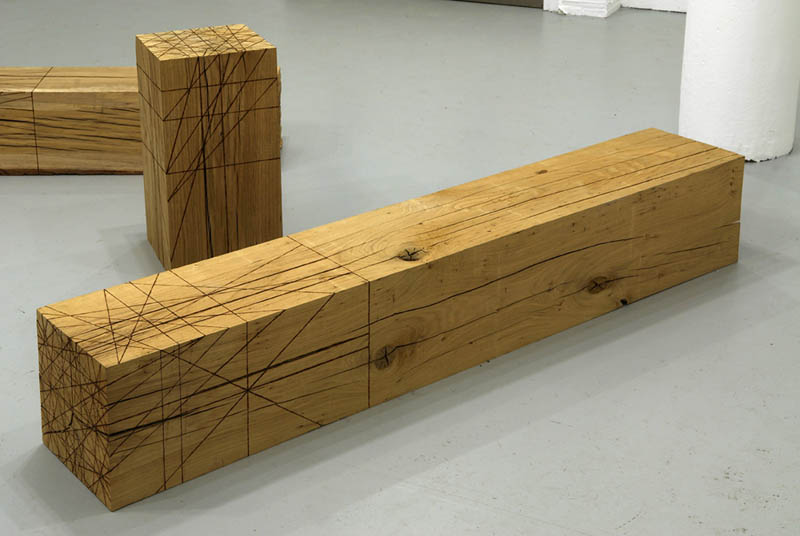
© » KADIST
Raphaël Zarka
Raphaël Zarka discovered the scientific manuscripts of Abraham Sharp while in Oxford. Sharp was an English 18th century astronomer whose treatise Geometry Improved became the subject of a new body of photographs and sculptures. In this document, Sharp draws infinite possible combinations that enable the making of a polyhedron from a wooden cube – the most complex figure allows a perfect form with 120 facets.

© » KADIST
Goddy Leye
Strongly influenced by history and memory, Goddy Leye’s paintings are based primarily on stories and mythologies. Containing ideas, emotions, and sensibilities, signs and symbols occupy an important place in Leye’s work, though he has to retrieve them from an interrupted history. The painting Animal was made in reference to an important precolonial kingdom, Bamun.

© » KADIST
Luke Butler
Drawing & Print (Drawing & Print)
In Captain X , Star Trek’s Captain Kirk, played by William Shatner, is limply draped over a large boulder in what looks like a hostile alien environment. However, Kirk’s passive pose doesn’t so much suggest the aftermath of a battle as it does heavy contemplation, depression, or utter despair. Captain X is part of a series of paintings depicting various Star Trek characters who are stricken with human emotion-—a tactic that diminishes the mythological grandeur associated with this heroic captain and his indefatigable crew.
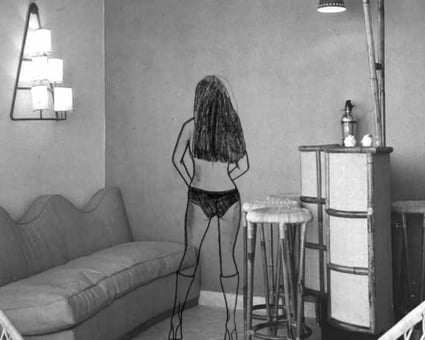
© » KADIST
Marwa Arsanios
I’ve heard stories (2008) is one of Marwa Arsanios early works. It is a short animated film staging a story that took place at the Carlton hotel in Beirut. This work is the first part of a longer project on this iconic building.

© » KADIST
Nicoline van Harskamp
The work is a speech composed of excerpts from autobiographies of well-known political characters. From each book an excerpts that describes a childhood event and one that describes a political event or statement was selected. The former, in most cases, functions as an alibi or explanation of the latter.

© » KADIST
J. John Priola
Priola pays particular attention to otherwise unnoticed details in the cityscape, a quality that not only recurs throughout his oeuvre, but which also places his work in line with a strong tradition of California documentary photography. Close-ups and attention to detail reveal something different: a portrait of what is usually discarded or missing, like unassuming weep holes in Alameda Street or minuscule weeds making their way up through the pavement in Chestnut Street . But these details are subtle to the point of being conceptual; from afar both images appear to be monochromes.

© » KADIST
Clare Rojas
Rojas’s two pieces in the Kadist Collection— Untitled (four-legged…) and Untitled (Bird’s Eyes) —are representative of her pictorial style which uses bold colorful blocks of paint and female and animal characters. While Untitled (Bird’s Eyes) does not depict any actual women, it nevertheless alludes to gender roles and the power of the female gaze. Apparently playful, this scene of two animals has an ominous quality: A bird and a hedgehog confront at each other and the bird appears to be poking, even eating the hedgehog’s eye.

© » KADIST
Jazmín López
Shot on 35mm in two simply framed shots, Jazmín López’s Juego Vivo captures children at play, mixing imagination, reality, innocence, and violence. Set within a lush, green forest, we see first several children come into the frame, walking towards us, as a disembodied voice counts off “Tres…cuatro…cinco…” A game of hide and seek is at hand, and sounds of the girl counting are met with scattering children. In the first shot, while everyone else disperses, one boy advances steadily toward the camera, holding a scavenged stick in his hands, wielding it like a gun.

© » KADIST
Julio Cesar Morales
The video Interrupted Passage presents a performance Morales staged in the former home of Mariano Guadalupe Vallejo, a mid-nineteenth-century Mexican general serving in California. Reenacted here is Vallejo’s acquiescence to Americans who were attempting to overthrow Mexican governance of the region. When a small militia arrived at Vallejo’s house to arrest him, he invited them in and shared a meal.

© » KADIST
Jordan Kantor
Lens Flare and the series Untitled Basel Lens Flare (6168, 5950, 7497) were part of a solo project by the artist presented at ArtBasel in 2009. Included in the Kadist Collection, these works continue to explore the ontology of the image to investigate the relationship between painting, photography, and a new time-based variable: film. Reduced here to the essential function of recording the exposure of light through the apparatus of a lens, Kantor then translated these film stills into painted colored canvases that retain the 3:4 aspect ratio of the 16mm film as well as the exact size of the projected image.

© » KADIST
Xijing Men
Welcome to Xijing – Xijing Olympics is the third of five chapters in the Xijing series. Produced concurrently to the 2008 Beijing Olympics, the Xijing Men stage their own versions of the Olympics, comprising events such as shot-put throwing with eggs, relay races with cigarettes instead of batons and marathon naps, often umpired by family members and children. Through slapstick skits they satirize the spectacle of stately ceremonies by playing on the absurdity of state pomp, for a reflection on modern society.

© » KADIST
Jonathan Hernández
In line with Hernández’s interest in catastrophe, Vulnerabilia (choques) is a collection of images of shipwrecks and Vulnerabilia (naufragios) collects scenes of car crashes. The artist has said that the appropriation of popular imagery is a way for him to take pictures without a camera and to register the things that happen in the everyday as visual essays that evidence the fragility of the world.
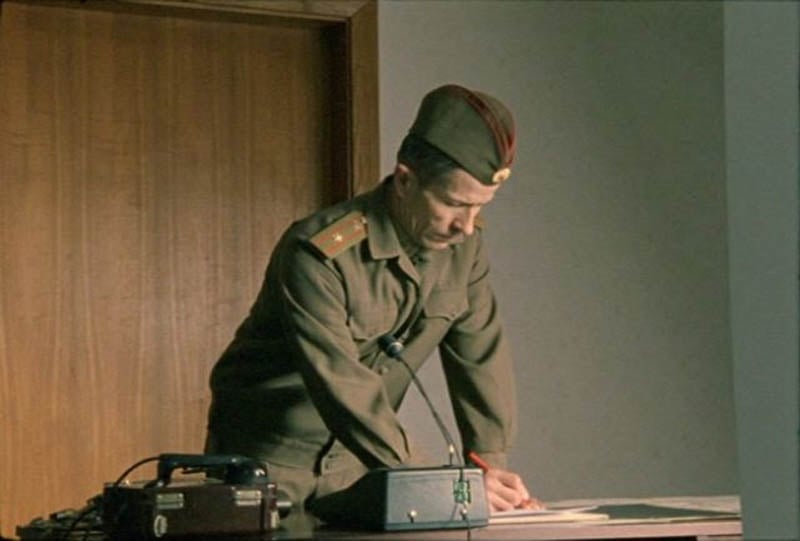
© » KADIST
Deimantas Narkevicius
The Dud Effect is a film that revisits the fear of nuclear attacks during the Cold War by staging the firing of a R-14 missile by a solitary soldier on the site of a real Soviet launch base installed in Lithuania. For this film, Deimantas Narkevicius used no animation or 3D effects, instead it is the silence of the place interrupted by the voice of the Russian soldier (who truly served on a military base in Lithuania) that creates this worrying atmosphere in which the execution of such an act becomes possible. The War Game (1965) by Peter Watkins was a source of inspiration, since he displays a personal and collective concern about the danger of the nuclear arms race in the United Kingdom in the 1960s.
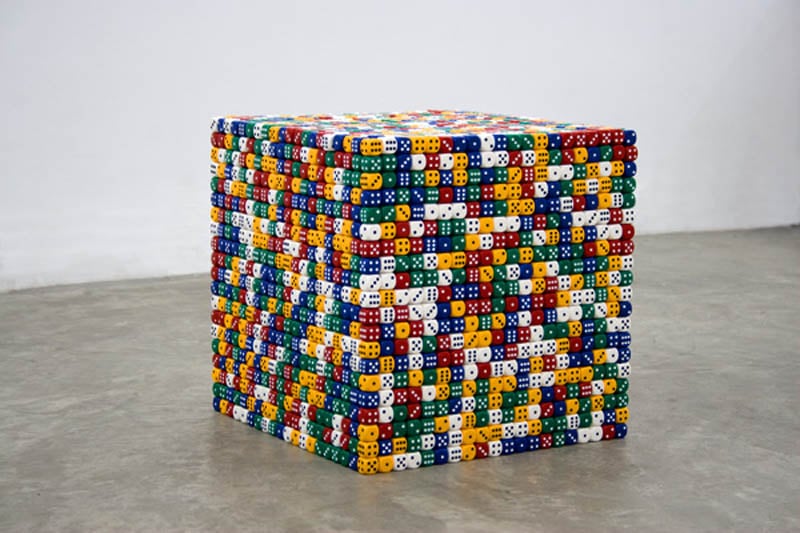
© » KADIST
Evariste Richer
Cumulocumulonimbus capillatus incus functions on the mode of a mise en abîme: it is a cube composed with 8000 dice. The work plays with chance, each installation produces a renewed visual combination. Robert Filliou said that Eins.
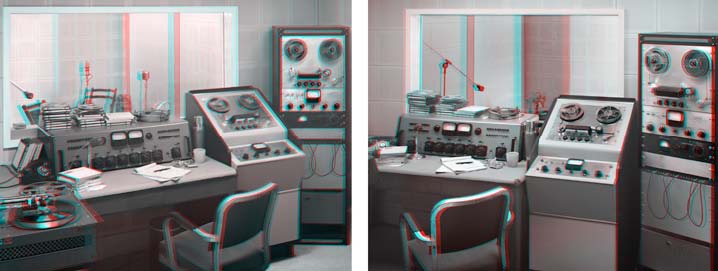
© » KADIST
Mark Soo
The two large-scale stereoscopic photographs in That’s That’s Alright Alright Mama Mama depict a recreation of Elvis Presley’s recording studio in Memphis, Tennessee. This study in doubles is underscored by its title, which repeats and doubles Elvis’s original song title. The images are hung in a specially angled wall and the viewers are provided special 3-D glasses in order to contemplate the image.

© » KADIST
Ron Terada
Drawing & Print (Drawing & Print)
The three Maiko s were included in Ron Terada’s 2008 exhibition, Voight–Kampf , at Catriona Jeffries gallery. More ambitious in size and subject matter, this show with its complex video installation marked a new path for Terada’s work. Voight-Kampf is based on a scene from Ridley Scott’s 1982 movie Blade Runner in which a giant advertising billboard in the midst of a dystopian city of Los Angeles in the future displays a geisha eating candy.
Bani Abidi
Bani Abidi’s practice deals heavily with political and cultural relations between India and Pakistan; she has a personal interest in this, as she lives and works in both New Delhi and Karachi...
Sharon Lockhart
- year born: 1964
- gender: female
- nationality: American
- home town: Norwood, Massachusetts
Anthony Goicolea
Goicolea, a first generation Cuban-American living in New York, makes work that explores his conflicted identity and the recent history of the Cuban people...
Marwa Arsanios
Marwa Arsanios is born in 1978 in Washington, United-States...
Gao Mingyan
Gao Mingyan produces video based-works that examine the political and epistemological violence of our contemporary moment...
Pedro Reyes
- location: Mexico City, Mexico
- year born: 1972
- gender: male
- nationality: Mexican
- home town: Mexico City, Mexico
Carlos Amorales
- year born: 1970
- gender: male
- nationality: Mexican
- home town: Mexico City, Mexico
Igor Grubic
- location: Zagreb, Hrvatska
- year born: 1969
- gender: male
- nationality: Croatian
Zhou Tao
Artist Zhou Tao has a diverse and varied practice, and notably, he denies the existence of any singular or real narrative or space...
Xijing Men
The Xijing Men hail, conceptually, from the fictitious city of Xijing, an imagined state in East Asia...
Javier Castro
Javier Castro was born in the in the neighbourhood of San Isidro in the heart of Habana Vieja, Cuba, where he lives and works...
Miri Segal
Miri Segal’s work relates to questions concerning the nature of life, the role of images, and the relationship between the two, whilst systematically exposing the nuances of perception...
Agatha Gothe-Snape
Based in improvisational performance, the meeting point between artistic process and social context is a central theme in Agatha Gothe-Snape’s work...
Guillaume Leblon
Guillaume Leblon is a sculptor, who questions the vocabulary of forms – he uses material encompassing copper alloy of tin and zinc, flows like water, lightning, smoke, and space to express notions of landscape and weightlessness...
Bruno Serralongue
Bruno Serralongue integrates his practice into the processes of production and distribution of information via images...
Ron Terada
Ron Terada belongs to a generation of Vancouver-based artists that follows the well-known Vancouver School of photoconceptualists which includes Jeff Wall, Stan Douglas, and Ian Wallace...
Hung-Chin Peng
There is a palpable urgency in the work of Taiwan-based Peng Hung-Chih, who uses video, sculpture, installation, and painting as means to criticize society...
Adrian Melis Sosa
Adrian Melis’s work is committed to presenting the range of intensity and nuance of human energy embodied through acts of resistance, resilience, and productivity...
Shaun Leonardo
For the past decade Shaun Leonardo’s practice has been fully engaged in the politics of race, identity and pervasive male violence in sports...
Nguyen Thai Tuan
Nguyen Thai Tuan was born in 1965, he studied at the school of Fine Arts of Hue where he studied propaganda art, which he got bored of very quickly...
Mark Soo
Born in Singapore, raised in Malaysia, and based in Canada, artist and curator Mark Soo’s practice is concept-driven and research-based...
Julio Cesar Morales
- location: San Francisco, California
- year born: 1966
- gender: male
- nationality: Mexican
- home town: Tijuana, Mexico
Mungo Thomson
- location: Los Angeles, California
- year born: 1969
- gender: male
- nationality: American
J. John Priola
In his characteristic black-and-white gelatin silver prints, San Franicisco-based J...
Melvin Moti
Scientific research, high and mass culture, and the processes of cultural production in contemporary society plays an important role in the work of Rotterdam-born artist Melvin Moti, currently based in Rotterdam and in Berlin...
Kate Gilmore
- location: New York, New York
- year born: 1975
- gender: female
- nationality: American
- home town: Washington, D.C.
Jonas Staal
Jonas Staal ‘s work includes interventions in public spaces, exhibitions, lectures and publications...
Zhang Peili
- location: Hangzhou, China
- year born: 1957
- gender: male
- nationality: Chinese
- home town: Hangzhou, China






